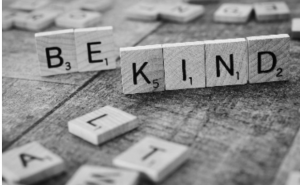Empathy is Compassion

What is Empathy?

Self awareness and empathy are not just “nice to have,” they impact people’s ability to be successful in life. Research has shown that people who cannot imagine another person’s inner emotional life, who cannot manage their emotions and who cannot read the room, struggle in the workplace and are less successful than people who have critical social emotional skills.
Empathy is showing compassion, understanding another person’s experience. It is walking in someone else’s shoes. The chances of bullying or ignoring another’s pain lessens remarkably in highly empathetic people. The ability to show empathy is a life skill. Reading the Room is a skill everyone can, and should, build. Identifying the physical and non-physical energy of a room helps you build friends. You are expected to express sorrow when someone is in distress.
Understanding Other People’s Emotions can be Taught
The child or adult who lacks empathy can be seen as uninteresting, selfish, boring and self-absorbed. Parents and teachers can teach empathy. This training can actually save this child from years of pain and isolation. Remember Empathy is Compassion, and who doesn’t need more of that?
How to Teach Empathy
Teaching empathy must involve the community and the individual. A  community that respects each other will foster empathy. Greater understanding of empathy comes about by working with the individual. What does empathetic behavior look like? Modeling reinforces empathy, as actions and messages help others learn to “walk in someone else’s shoes.”
community that respects each other will foster empathy. Greater understanding of empathy comes about by working with the individual. What does empathetic behavior look like? Modeling reinforces empathy, as actions and messages help others learn to “walk in someone else’s shoes.”
3 Situations to Teach Empathy
• The emotional experience of others –
Draw attention to the emotional experience of others as the act is occuring. Quietly observe without staring, and later have conversation about this episode. How could that person have felt? What was that experience like for you to witness? What could be going on in their lives? What did you notice about her reaction to the situation? How do you think you would have reacted in his shoes?
• Lack of Empathy in Individual –
When an unpleasant behavior or action occurs, collaboratively talk about it. Rudeness or lack of empathy should be signals that this person is not interpreting how his behavior affects others. Ask, How do you think I feel when you correct me? Is that what you intended?
• Others’ Point of View –
Preaching rarely works. Instead of insisting, try to explore the state of mind of the person you wish she would reach out to. How does Grandma feel when you don’t visit? Do you think he would have liked to be invited to lunch? Step into the shoes of others to help him reflect on other people’s state of mind. What do other people feel? What is the reaction to their behavior? What did the other people’s facial expressions tell them about their feelings?
Empathy is a social emotional learning skill that needs to be taught. It is as important to a person’s development as academics. Teachers and parents have many resources, including those in Why Will No One Play With Me? to practice at home. This is particularly relevant during COVID.
Deeper Dive:
December 3, 2020 – Social Emotional Training for Teachers and Adults with Caroline Maguire and Scarlett Lewis
Why Teaching Your child Empathy Builds Their Social Skills – Psychology Today


